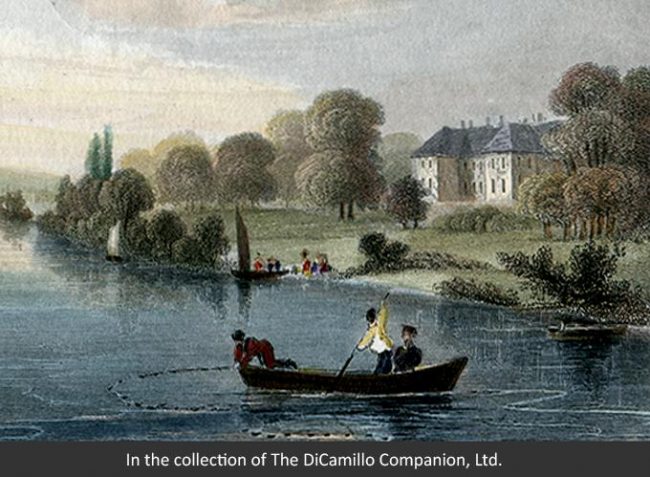
The house, with the Thames in the foreground, from a circa 1840 engraving.
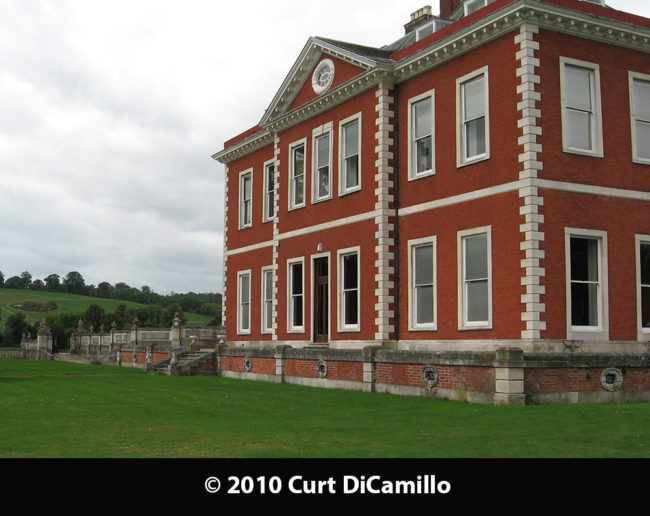
Side facade
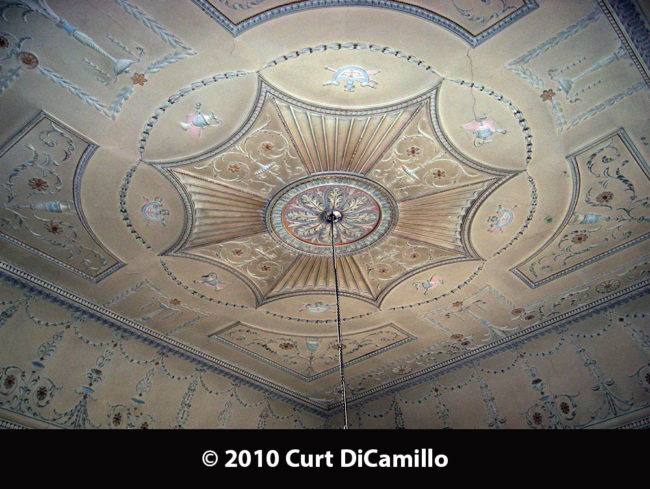
Plaster ceiling
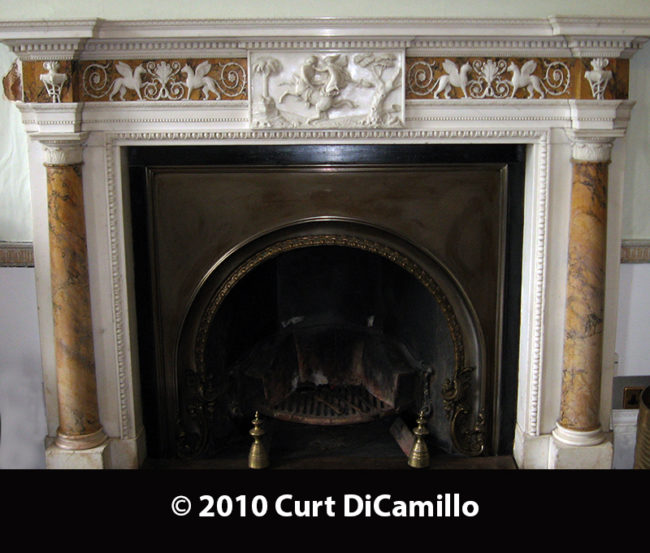
Marble fire surround
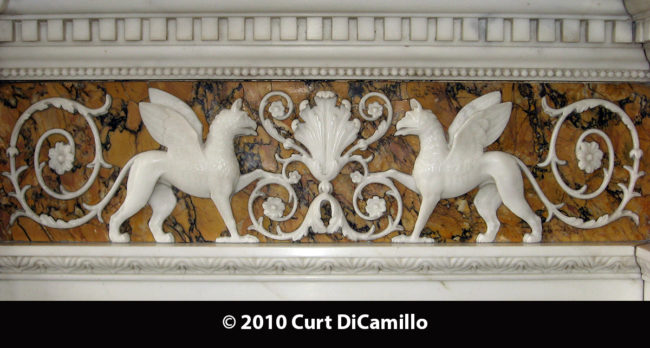
Griffin detail of marble fire surround
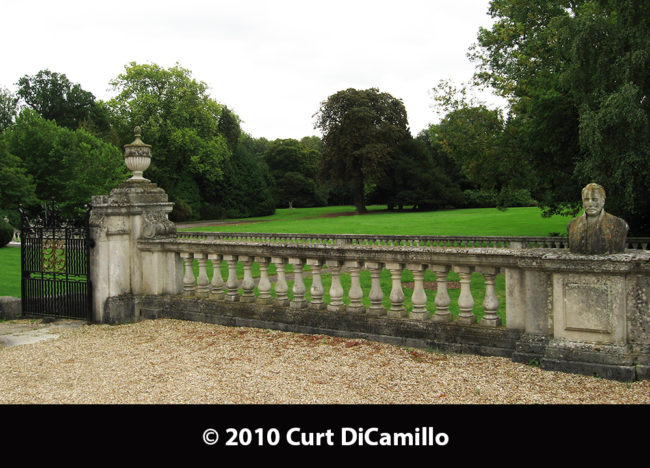
The front garden
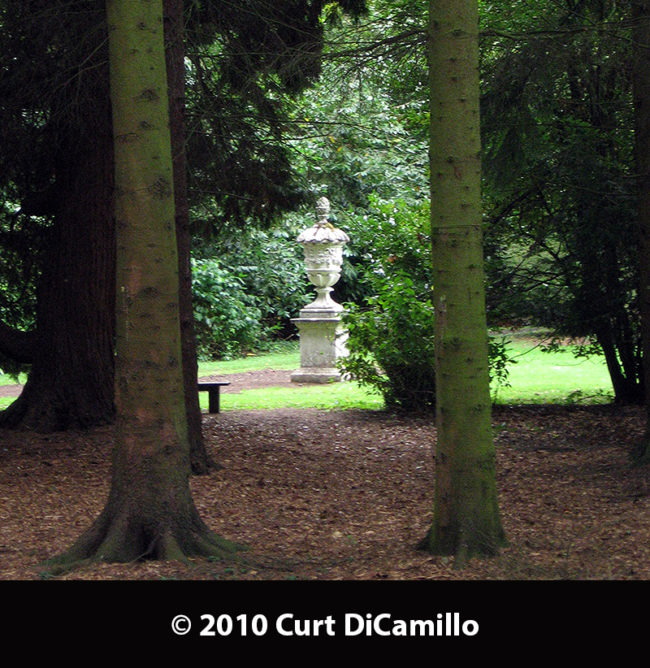
The garden
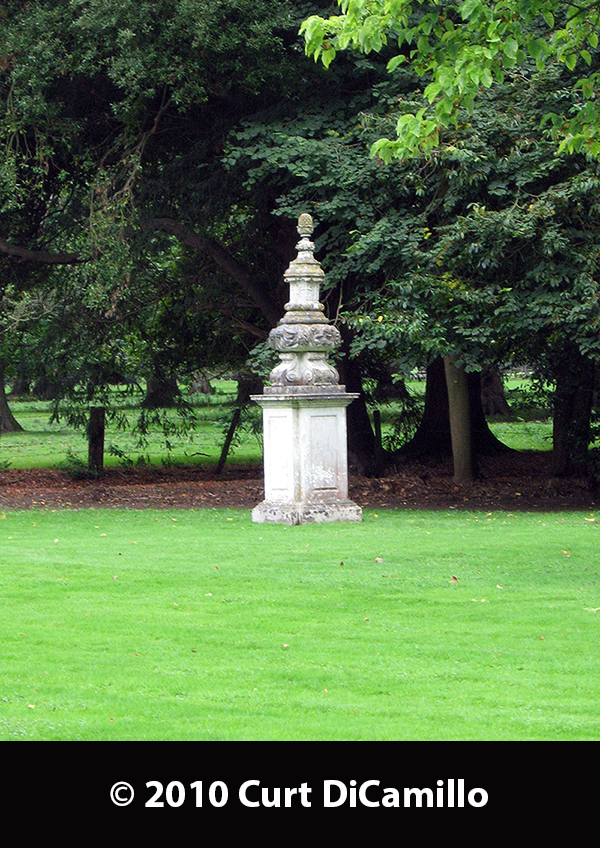
The garden
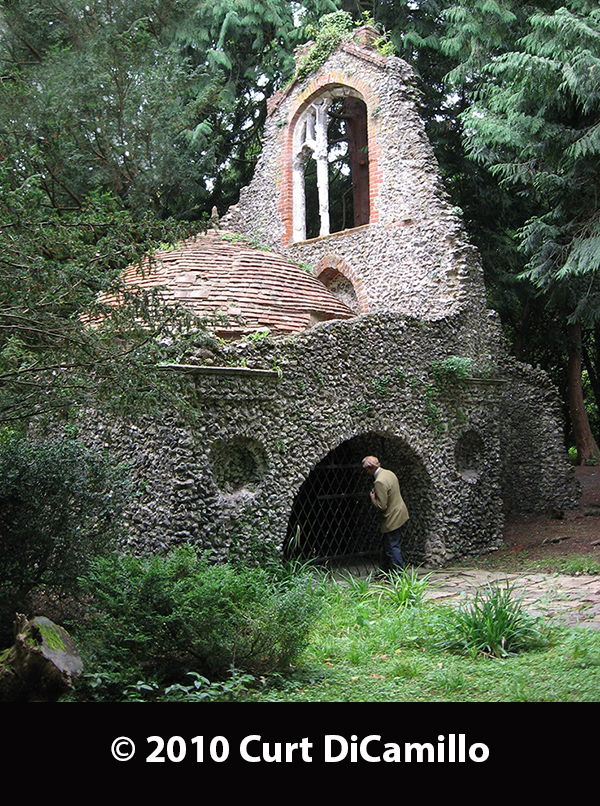
The grotto
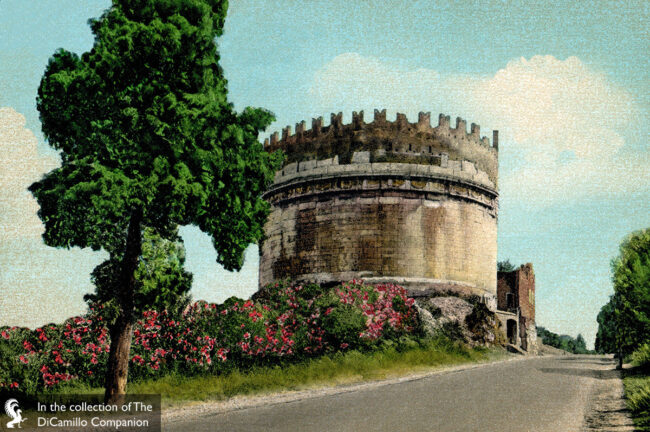
The tomb of Caecelia Metella on the Appian Way, Rome, from a circa 1920s postcard. The design of the Freeman Mausoleum may been influenced by this famous ancient Roman tomb.
Built / Designed For: William Freeman
House & Family History: Fawley Court is a two-story, square, red brick house with ashlar dressings that was completely rebuilt in the late 17th century for William Freeman, a plantation owner and merchant. The design of the house is attributed to Christopher Wren, while the interiors are noted for their work by James Wyatt (possibly his first country house commission). The library has a fine plaster ceiling by Wyatt and painted illusionistic relief panels by Anne Seymour Damer in the frieze. After the Norman Conquest Fawley Manor was given by William the Conqueror to his relative, Walter Giffard, one of the primary compilers of the "Domesday Book." During the Civil War, Fawley was the seat of Judge Sir Bulstrode Whitelocke, a prominent Parliamentarian. As a result, in 1642, during fighting at Fawley between Roundheads and Royalists (the latter commanded by Prince Rupert of the Rhine), the Royalists, who were quartered in the house, did as much damage as possible to its interiors. Fawley, as seen today, was rebuilt circa 1684; soon after the house received a visit from the king, William III, who stayed here during his march from Torbay to London. In the 19th century Fawley Court was sold to Scottish banker and railway entrepreneur Edward Mackenzie, who retired here in 1853. During World War II Fawley was requisitioned by the British Army and used as a training camp. Like many country houses occupied by the military during the war, the house was left in poor condition, which led, in part, to its sale in 1953 to the Congregation of Marian Fathers. The Catholic order purchased Fawley for use as a school for Polish boys: Divine Mercy College. The house suffered significant damage in the early 1970s from a severe fire, after which it was rebuilt with donations from the international Polish community. Divine Mercy College closed in 1986 because of a lack of students of Polish origin, after which the Marians converted Fawley Court into a retreat and conference center. In 2008, in a controversial decision, the Marian Fathers sold Fawley for £16.5 million to a private individual, who is restoring the house and returning it to a single family home. Fawley Court was supposedly the inspiration for Kenneth Grahame's Toad Hall in his 1908 book, "The Wind in the Willows."
Collections: Fawley, when owned by the Marian Fathers, was noted for its collection of documents of Polish kings.
Garden & Outbuildings: John Cooke (who changed his name to John Freeman upon inheriting Fawley) was a merchant, dilettante, and amateur architect of considerable talent who laid out the grounds at Fawley, including the rectangular canal. Colvin stated that "Freeman was one of the pioneers of English romantic taste." This exalted title was bestowed upon him because he built one of the earliest Gothick style garden buildings in England, when, ante 1732, he unveiled his Fawley Gothick folly, designed to display some of the ancient Greek and Roman sculpture Freeman had purchased from the famous collection of Lord Arundel (some of which remain in the grounds today). A drawing of the interior of Island Temple, attributed to James Wyatt, was auctioned at Christie's on November 30, 1983. The drawing is believed to be the earliest essay in England of the Etruscan style.
Chapel & Church: John Freeman refitted the interior of the Fawley Church at his own expense in 1748, using furniture from the chapel at Canons House, which had been demolished in 1747. In 1750 he built the domed Freeman Mausoleum in the churchyard of the village church at Fawley. Based on the tomb of Caecilla Metella on the Appian Way in Rome (see "Images" section), and other Roman mausolea and temples, Colvin said this was one of Freeman's most important works. Fittingly, Freeman was interred in the mausoleum at his death in 1752. In the mid-20th century a modern church was built in the grounds for the college. Funded by the Polish Prince Stanislaw Albrecht Radziwiłł (who was buried in the crypt after his 1976 death), it was in use until the 2008 sale of Fawley. On August 31, 2012 the Marian Fathers removed the grave of the founder of Divine Mercy College, Józef Jarzębowski, from the burial ground at Fawley Court and reburied him in Fairmile cemetery in Henley-on-Thames.
Architect: Lancelot Brown
Date: 1764-66Architect: Paley & Austin
Date: 1883Architect: Christopher Wren
Date: Circa 1684Architect: James Wyatt
Date: 1770-71Architect: John Freeman
Date: Circa 1732
Title: Buildings of England: Buckinghamshire, The
Author: Pevsner, Nikolaus; Williamson, Elizabeth
Year Published: 1994
Reference: pg. 362
Publisher: London: Penguin Books
ISBN: 0140710620
Book Type: Hardback
Title: Biographical Dictionary of British Architects, 1600-1840, A - SOFTBACK
Author: Colvin, Howard
Year Published: 1995
Reference: pg. 1114
Publisher: New Haven: Yale University Press
ISBN: 0300072074
Book Type: Softback
Title: No Voice From the Hall: Early Memories of a Country House Snooper
Author: Harris, John
Year Published: 1998
Publisher: London: John Murray
ISBN: 0719555671
Book Type: Hardback
House Listed: Grade I
Park Listed: Grade II*
Past Seat / Home of: Walter Giffard, 11th century. Sir James Whitelocke, 17th century. William Freeman, late 17th century. John Cooke (changed surname to Freeman), 18th century; William Peere Williams-Freeman, 19th century. Edward Mackenzie, 19th century.
Current Ownership Type: Individual / Family Trust
Primary Current Ownership Use: Private Home
House Open to Public: No
Historic Houses Member: No